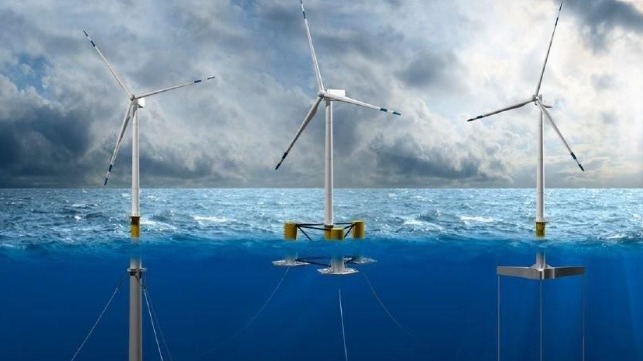Schwarzenegger Institute Backs Call for West Coast Offshore Wind

The University of Southern California's Schwarzenegger Institute has published a new study outlining the economic and social benefits of installing offshore wind farms at scale off the U.S. West Coast.
The study - sponsored by the American Clean Power Association (ACP), Offshore Wind California (OWC) and The Energy Foundation - finds that installing 10 gigawatts of offshore wind capacity would generate resource cost savings of at least $1 billion annually, along with 100-200,000 job-years of employment over the next two decades.
"I have always said that California needs an all of the above energy strategy and there is no doubt that offshore wind is an important part of that portfolio,” said former California Gov. Arnold Schwarzenegger, the institute's benefactor. “By deploying this clean energy resource, we can create thousands of jobs and meet our energy demands, all while reducing emissions and cleaning up our air. At the Schwarzenegger Institute, we are committed to finding solutions that reduce air pollution and climate change."
https://www.lamag.com/citythinkblog/usc-arnold-schwarzenegger/
The 10-gigawatt target comes from California Senate Bill 100 (SB 100), which commits the state to meeting 100 percent of its electricity needs with renewable energy by 2045. That target will require significant effort to attain: the California Energy Commission estimates that the state will have to add more than than 150 GW, of wind, solar, hydro, geothermal and other renewable sources to achieve it (while also providing more power for electric vehicles and other new demands).
The state is currently betting on acquiring 10 GW of this resource base from offshore wind. The waters off California are too deep for bottom-fixed wind installations and will require floating platforms, raising costs. The study notes that the levelized cost of energy for floating wind is higher because its technology is new; the price is expected to come down to about $75/MWh by 2027, which would still be up to three times the present-day cost of onshore wind ($26-54/MWh).
In addition to new floating wind farms, the state will have to build out more transmission capacity to move power from where it is produced to where it is consumed. Some of the best offshore wind resources for California are off the northern coast of the state, close to the Oregon border, and that power would have to be transferred south to the state's main population centers.
If the plan were actualized, the authors found that 10 GW of floating offshore wind could reduce CO2 output by about 4.7 million tonnes per year, simply by displacing 5 GW of natural gas-fired peaking (peak demand) operations. This is where offshore wind is particularly desirable, according to the authors: it fills in for solar when the sun goes down, reducing the need for natural gas generation. The avoided emissions would work out to the prevention of about $340 million in global climate damages per year, according to the authors.
The study was released in a webinar featuring former Gov. Schwarzenegger and two state assemblymembers, David Chiu and Laura Friedman, who have sponsored legislation to advance California's offshore wind push. “Offshore wind power could not be coming at a better time for California,” Friedman said. “With climate change threatening power supplies across the Western U.S., having a local source of clean power that complements California’s solar generation will be invaluable in coming decades.”
